A day in the life of a Hong Kong protester
Timothy McLaughlin follows 16-year-old Gigi as she tries to elude surveillance and join mass rallies
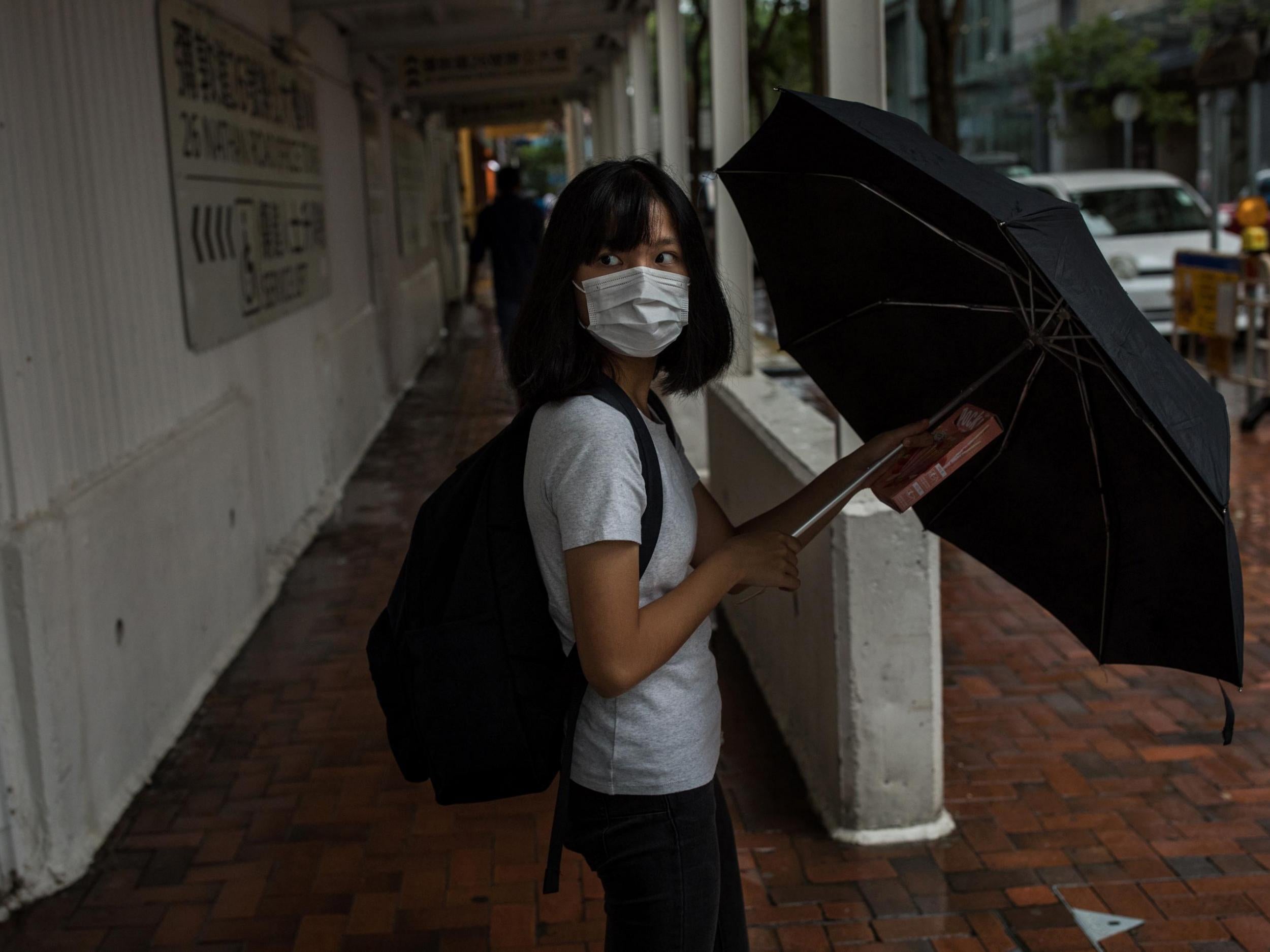
Your support helps us to tell the story
From reproductive rights to climate change to Big Tech, The Independent is on the ground when the story is developing. Whether it's investigating the financials of Elon Musk's pro-Trump PAC or producing our latest documentary, 'The A Word', which shines a light on the American women fighting for reproductive rights, we know how important it is to parse out the facts from the messaging.
At such a critical moment in US history, we need reporters on the ground. Your donation allows us to keep sending journalists to speak to both sides of the story.
The Independent is trusted by Americans across the entire political spectrum. And unlike many other quality news outlets, we choose not to lock Americans out of our reporting and analysis with paywalls. We believe quality journalism should be available to everyone, paid for by those who can afford it.
Your support makes all the difference.Hong Kong’s summer has been defined by upheaval. Gigi, who is 16, has been a constant presence at anti-government demonstrations in the semiautonomous territory. She dons a helmet, goggles and respirator and wedges in with the crowds agitating with police. She has spent much of her school break at front lines, in pitched street battles, dodging tear gas, arrest and sporadic rounds of rubber bullets.
Five years ago her older brother let her tag along to the Umbrella Movement protests that paralysed the city for 79 days as demonstrators occupied main roads and called for universal suffrage. The experience kick-started an interest in activism, but her enthusiasm dwindled when the movement ended.
In February, she started paying close attention again, when Hong Kong’s pro-Beijing government tried to rush through a bill to allow extraditions to mainland China.
Opposition to the legislation built steadily, commanding world attention in early June when hundreds of thousands of people demonstrated. Although the bill has been shelved, protests have continued unabated, growing into a far broader pushback against Beijing’s increasing control over the city.
Many days, Gigi is among the protesters. She is one of tens of thousands of young students on the streets, but she mostly travels alone.
Much of the protest organising occurs on the encrypted messaging app Telegram and on LIHKG, a popular Cantonese-language message board.
Gigi agreed to allow reporters and a photographer from The Washington Post follow her through a day at a mass rally to show how the leaderless movement works, under the condition that she be identified by only one name and her face obscured.
3:09 pm
Leaving home
As a precaution on Sunday, Gigi forgoes the city’s fast and efficient train system and boards a bus before hopping on the Star Ferry, one of the city’s oldest modes of transportation, for a short ride across Victoria Harbour. Hong Kong in recent years has integrated more technology into the infrastructure of the city of 7.3 million. These advancements, while easing everyday life for many, can leave behind more digital fingerprints.
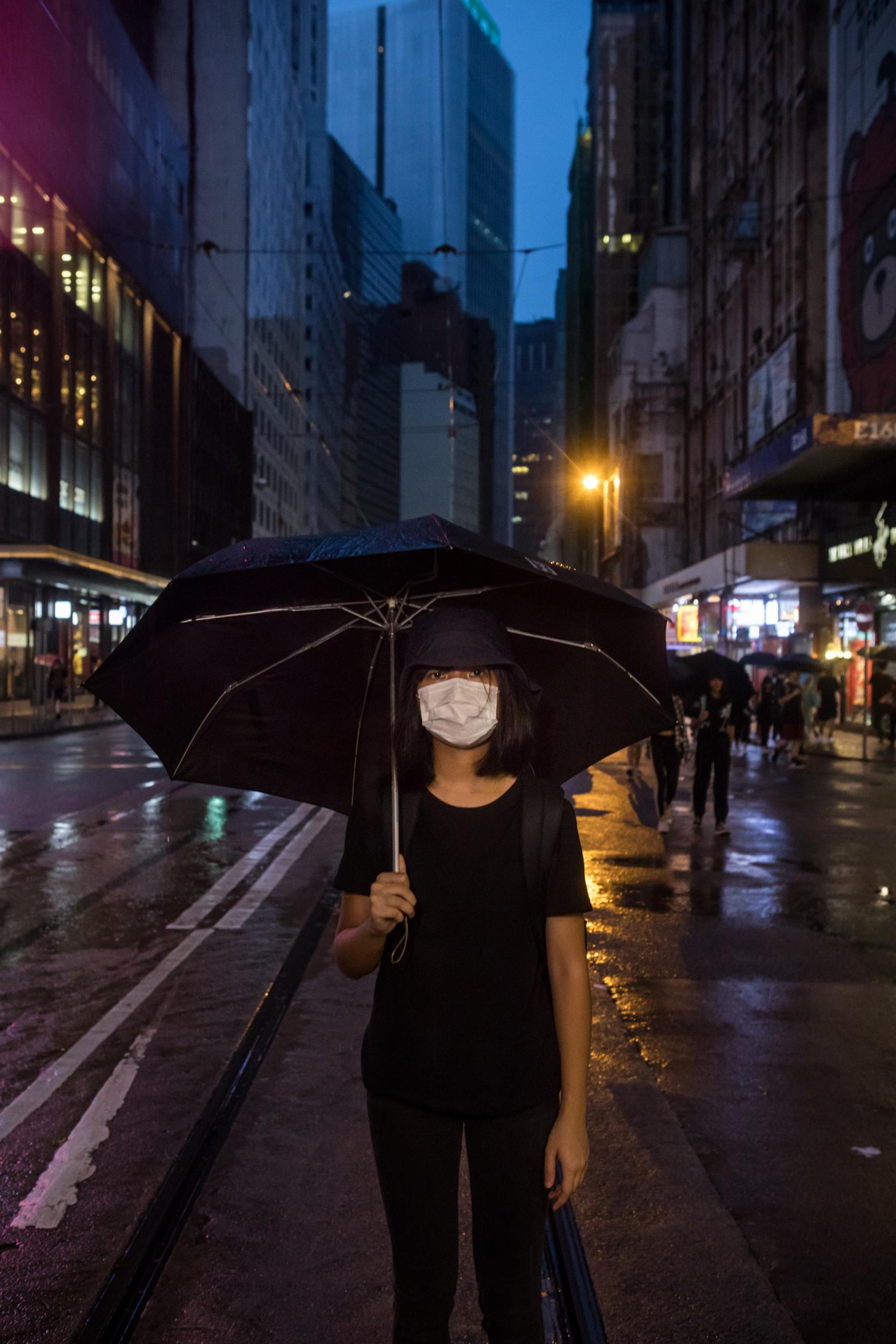
After weeks in the streets amid sweltering heat, Gigi climbs onto a double-decker bus amid a deluge of rain for the first leg of what will be a 16-mile trek of today’s resistance. She was initially drawn to the protests as a way to voice displeasure with the extradition bill, but like many demonstrators, she’s now irate over what she sees as excessive police force and government stubbornness. Her parents and two older brothers have also been active during this summer’s protests, as have her friends. But as violence has marred demonstrations, those closest to her have sat out rallies. On this day her family stay at home.
She munches on strawberry-flavoured biscuit sticks, slipping them under her white face mask, as the bus moves haltingly through traffic. Along the route, Gigi points out of the window to places where police and protesters have clashed in recent weeks.
The protests, she says, have brought her to places in Hong Kong she never previously visited – a summer-long, mostly self-guided civil disobedience tour. “I was really lazy before,” she explains on the bus, glancing at her phone for updates on the rally. “I was always thinking about how I could find a way to stay home. But now I come out every weekend.”
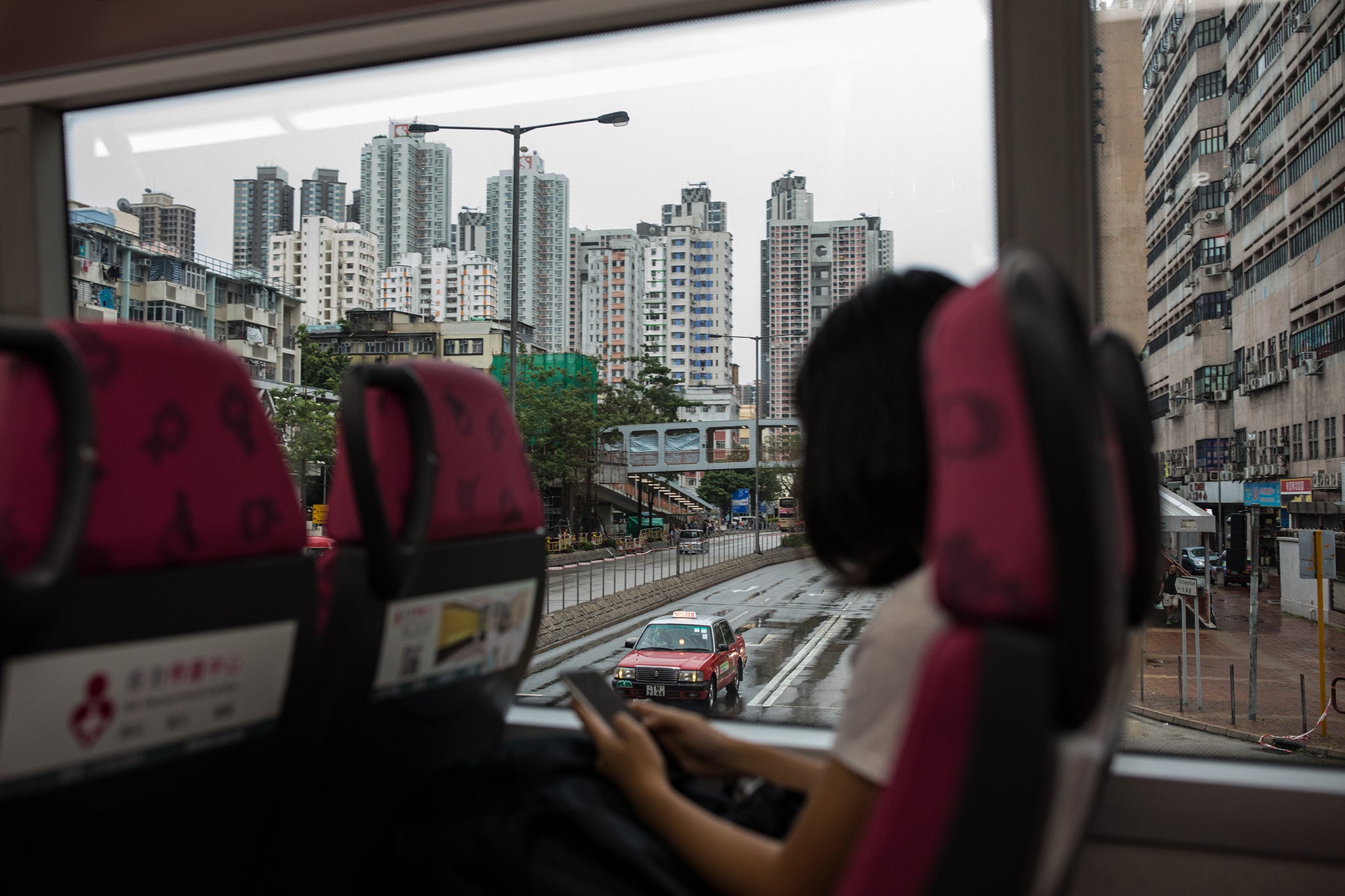
Gigi hustles off the bus in Tsim Sha Tsui, an area popular with tourists, for the short walk to the ferry dock. She strides quickly past The Peninsula hotel – famed for its fleet of Rolls-Royces and high tea – and darts through the cultural centre, taking care to quickly dry off her black umbrella at the entrance.
4:06 pm
A trip across the border
She slips back outside, near a group of domestic workers from Indonesia sheltering from the rain on their day off. They pay little attention to the growing number of black-clad protesters passing by. They are more interested in a woman posing for photos in her jewelled wedding gown. Life in Hong Kong has been disrupted by the protests, shuttering large swaths of the city at times, but just a short distance away, life continues unabated.
I was really lazy before ... I was always thinking about how I could find a way to stay home. But now I come out every weekend
At the ferry terminal, Gigi unzips a small, bulging coin purse and digs out money for fares. She’s fearful that tapping her Octopus card – a rechargeable smart card that can be used to pay for everything from public transportation to convenience-store snacks – will leave unwanted traces that authorities could use to track her. Her clothes are nondescript. In recent weeks, protesters have taken to covering up logos on their clothes with black tape to remain as anonymous as possible.
This caution is not unfounded. At an earlier protest that turned violent, Gigi says she was grabbed from behind and yanked backward. She briefly panicked, fearing she’d been nabbed by riot police. When she looked around though, whoever had grabbed her was gone. Many have been less lucky. More than 700 people have been arrested in connection with the protests and more than 40 face riot charges that carry a maximum 10-year sentence. Gigi hopes to study journalism when she graduates and an arrest could derail that goal.
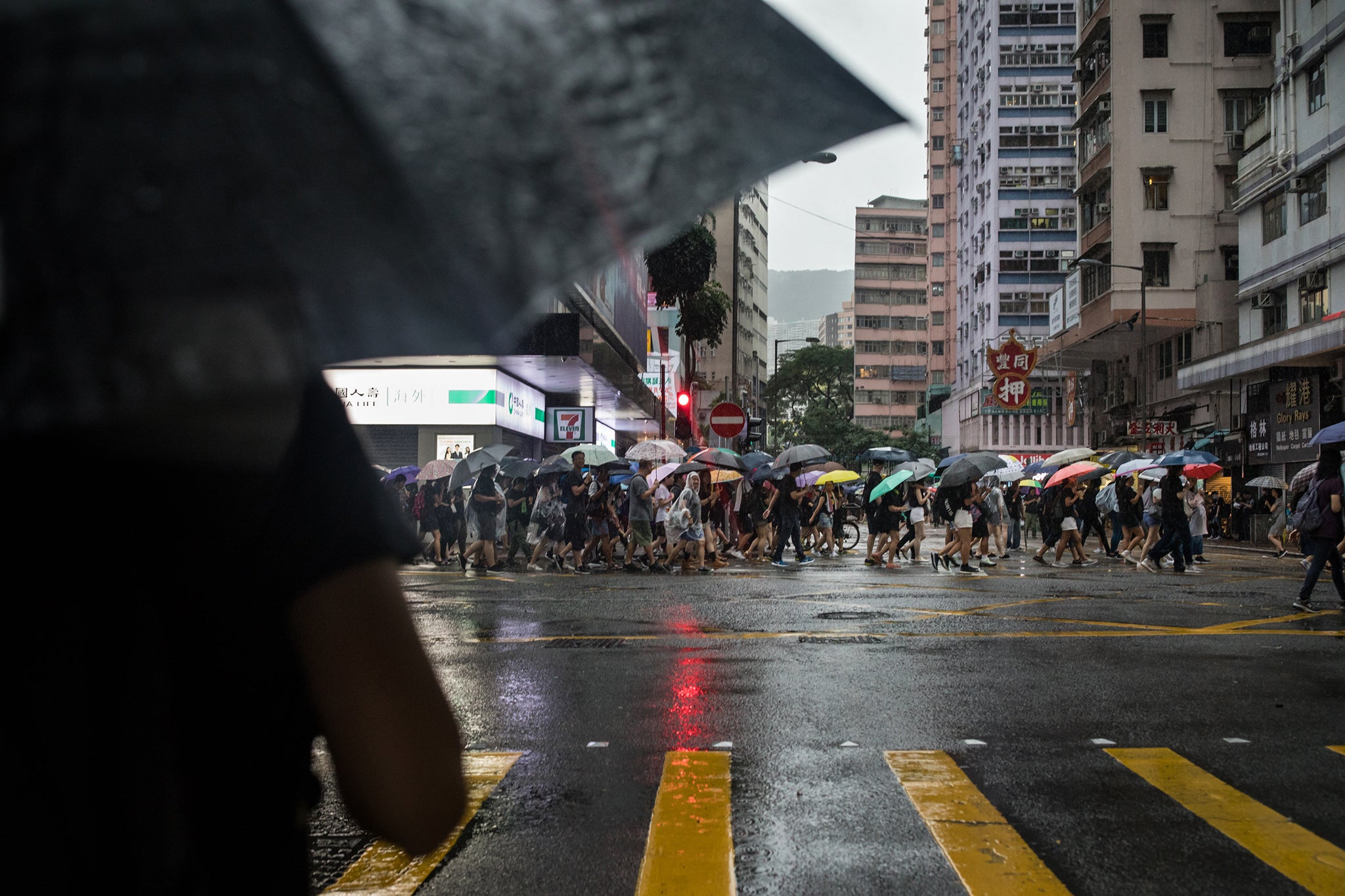
The crowd of protesters making their way across the harbour to the march appears to briefly overwhelm ferry staff. The upper deck is too crowded, and Gigi and others are hustled down a green metal ramp by a terminal worker and onto the lower deck before the boat departs.
4:52 pm
Joining the millions
The rally in Victoria Park was permitted by police, but an application for a march was turned down. Neither this inconvenience – nor the rain – has deterred people from showing up. Early photos on social media show a multicoloured canopy of umbrellas completely covering the park. Messages on Telegram indicate people have spilled into major roads that are quickly filling up. Another enormous turnout looks to be building.
Gigi joins up with the river of protesters. Chants of “Hong Kong, add oil!” rise up from the crowd and hang in the air before dying down. The leaderless nature of the protests means there are moments of indecision, with no clear directions on where to go and what to do next. Gigi is unbothered. “Be water,” she says, repeating the mantra of Hong Kong film star Bruce Lee that protesters have adopted. “We will see where we should go depending on where the others go.”
Gigi checks her phone. Where to? At one point, she stops and asks fellow marchers what their plans are. Even with crowdsourced mapping and a deluge of updates, asking for directions is sometimes the easiest option.
She ducks into the entrance of a building where others are sheltering from the rain and snacks on cookies while texting some friends. Two are on their way but came out to the rally with their mothers, who need to be dropped off at the subway station.
The two, who asked to be identified as Hongho and Ken, are in their late 20s. They and Gigi met at one of the first protests early in the summer, when the crowd was being dispersed and heading home. Gigi used to chat with more protesters on the front lines, but a few weeks ago police officers sprung a trap. They disguised themselves as protesters and made arrests. Since then, she has kept to herself and a few other protesters she trusts.
6:40 pm
Being water
The three set off, heading in the direction of China’s liaison office, a flash point of previous protests. Along the way, Hongho explains why he and Gigi and Ken continue to show up to protests despite the risks. “Hong Kong needs to win this fight,” he says. “Or else it will soon be like China.”
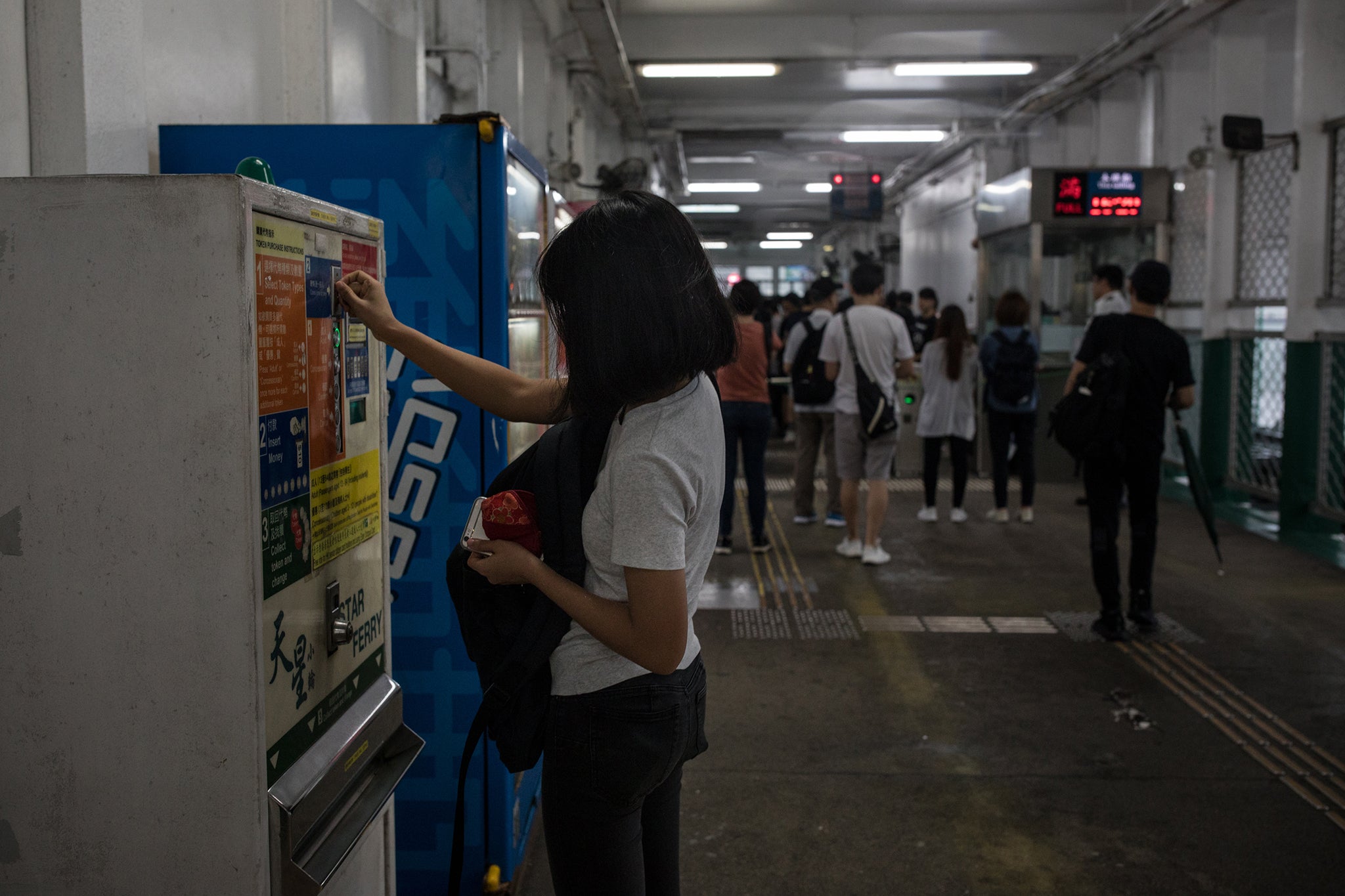
The walk is halting, hampered by indecision. The rain has not relented. Gigi’s sneakers are soaked. “I don’t know what I want to do. I just want to buy a pair of socks,” she says, then walks into a nearby store to get a dry set.
New socks acquired, the trio continue on towards the liaison office. Again, they stop to ask for an update from a group of protesters smoking outside an off-track betting parlour. They caution that there are riot police in full gear near the office. Earlier in the week, protests at Hong Kong’s airport turned violent, and some protesters apologised for the mayhem. Organisers of today’s march have called for it to remain peaceful, and a bald man who towers over Gigi tells her that people should not confront the police.
The advice appears wise as the group gets closer to the liaison office. Protesters are badly outnumbered. Dozens of riot police are suited up, their plastic shields glinting in the streetlights. Motorcycle officers line the road, as well. Gigi and her friends join a larger group of protesters who hang back, about a block from the police. They ask journalists returning from down the street how many police there are. And the three decide this fight, tonight, is not worth picking.
Hongho and Ken are ready to head home. Gigi, who has tramped across the city for hours, is not. She hears that people are gathering near the Legislative Council complex. In July, she helped storm the building and now wants to check things out, eager at the possibility of confrontation with police. The three pile onto the subway, but as they walk up the steps of the station, they see a mass of people going the other direction. Gigi suddenly loops back, rides the escalator back down and slides again into the subway.
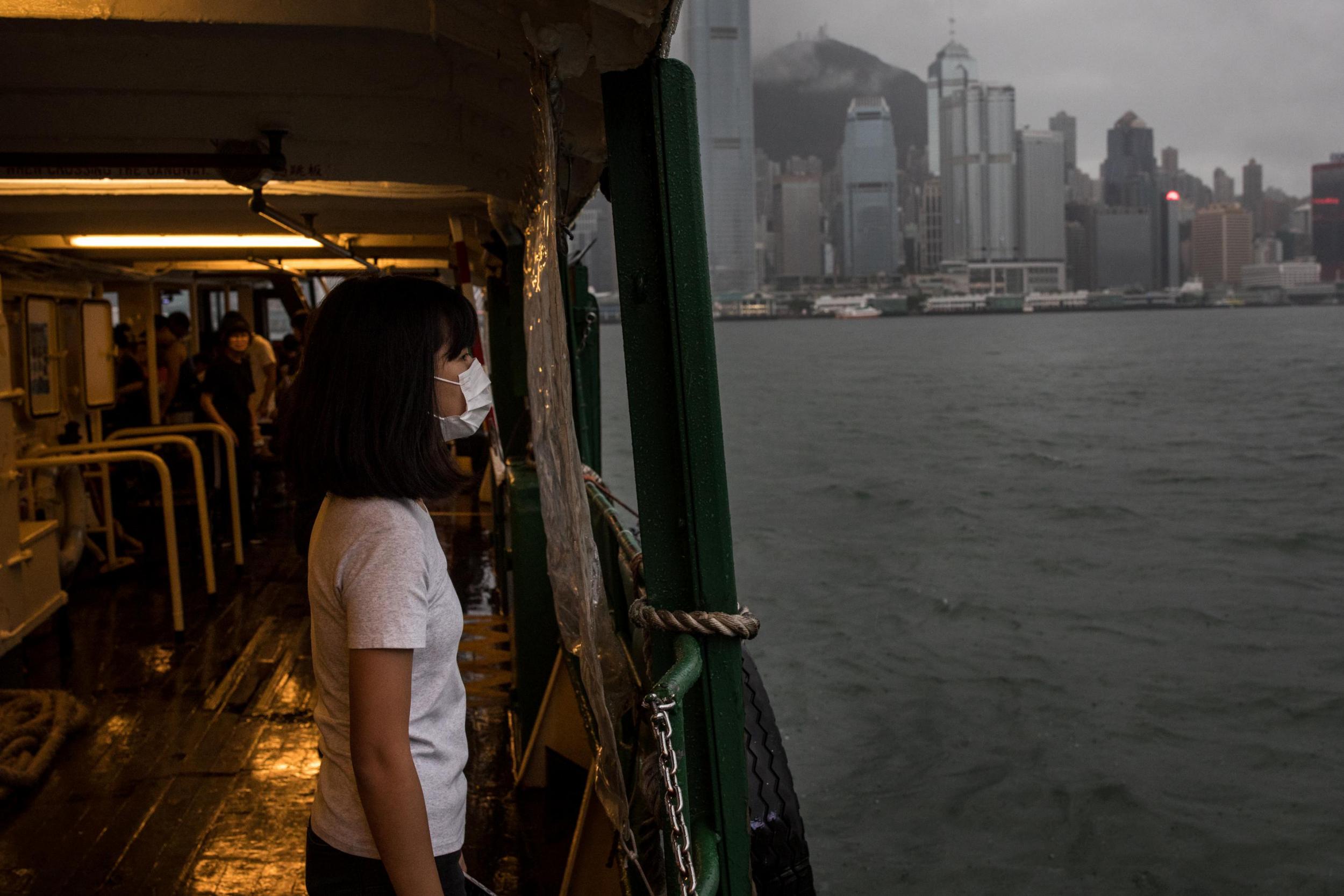
Now she’s emerged at Causeway Bay, a busy, neon-lit shopping area where thousands of protesters are milling in the streets. The rain has left puddles that reflect the glowing billboards, and protesters pause to snap photos in the reflection. Gigi wants to check out what remains of the crowd in Victoria Park.
Hundreds of people are still lingering, listening to speakers who take turns at the microphone, saying why they joined the protest. One young woman sobs as she talks about what it means to be a Hong Konger. “We hope to see you all next time; we cannot let anyone down,” she says. Gigi begins to cry, as well. She walks away from the crowd to sit on a nearby ledge. A few minutes later, she walks quickly across the park into the night, then turns briefly to wave goodbye.
Later that night, the Civil Human Rights Front, which organised the day’s events, announces that some 1.7 million people attended the rally, which remained peaceful. The government shows no signs of conceding and appears to expect that the movement will fizzle out with the resumption of classes next month. But campuses may become the next flash point. Student leaders from 10 Hong Kong-based universities have planned new protests if the government does not meet the five demands laid out by demonstrators. Secondary students are organising, as well, with plans for class boycotts and rallies beginning in September.
Asked whether she would take part, Gigi answers almost before the question is fully finished. “Of course,” she says.
© The Washington Post
Join our commenting forum
Join thought-provoking conversations, follow other Independent readers and see their replies
Comments